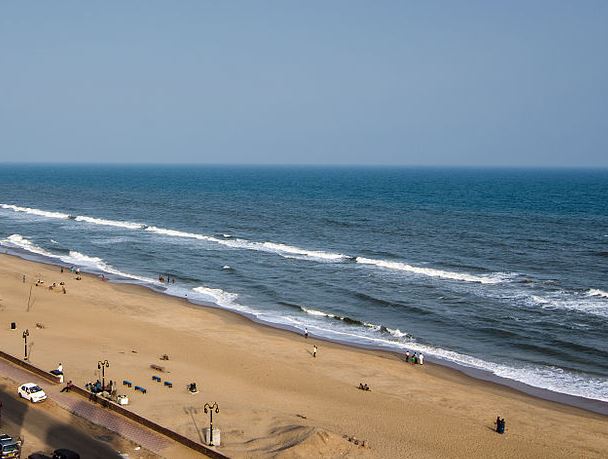New Delhi: The National Green Tribunal has been informed that various measures, including immediate microplastic cleanup drives and prohibiting high-risk plastic items, were needed to curb microplastic contamination across sea beaches in Odisha’s Puri.
The green body was also informed that Swargadwar Beach was “a microplastic hotspot needing urgent mitigation”.
The National Green Tribunal, while hearing a matter regarding alarming levels of microplastics in Puri beaches, had sought a response from the Odisha State Pollution Control Board (OSPCB).
The OSPCB reply dated December 6 said it operated a coastal management cell under the Integrated Coastal Zone Management Programme (ICZMP), headed by the chief environmental scientist cum nodal officer.
“The coastal management cell conducted an inspection November 6. During the inspection, samples of microplastic contamination in seawater and beach sediments of Puri sea beach had been collected and analysed in the board’s central laboratory,” the reply said.
The board conducted a study about quantitative analysis of microplastics in seawater and sediment samples, along with the characterisation of microplastic types, following which a technical report was prepared.
The report recommended several “prioritised actions” such as immediate microplastic cleanup drives, deployment of fibre filters in urban runoff channels, regular seawater sampling to monitor and track pollution levels, and local bans on high-risk plastic items like microbeads, straws, and disposable cutlery, the OSPCB reply said.
The report, which was annexed to the reply, said the highest microplastic density in sediments was found in Golden Beach because of heavy tourist activity and localised plastic degradation.
The highest microplastic density in seawater was found in Swargadwar Beach because of continuous tourist activities and plastics received from land.
The dominant microplastic type across locations were fibres, followed by fragments, pellets, films and foams, the report said.
Microplastic fibres are of various types, including the common polyethene terephthalate (PET) and polyethene (PE).
The report said, “This trend (of dominant microplastic types) underscores the widespread prevalence of fibre-based pollutants, likely originating from synthetic textiles and fishing-related activities.”
The Swargadwar Beach experiences the highest density of visitors as it serves as the epicentre for final rites in the Hindu religious tradition; the Golden Beach is a major tourist attraction; the Blue Flag Beach, around a kilometre west of Golden Beach, has lower pollution levels; and the Chakratirtha Beach, located a kilometre away from Blue Flag Beach near a fishing village, exhibits notable human activity, the report said.
“The total microplastic abundance in sediment samples across the beaches exhibited a relatively consistent pattern, with the Swargadwar Beach recording the highest quantities across all categories. This observation aligns with its heavy tourist activity and proximity to urban sources of plastic pollution,” the report said.
Regarding microplastic concentrations, it said the highest concentrations were found in Swargadwar Beach, followed by Golden Beach, Chakratirtha Beach and Blue Flag Beach.
It added, “The lowest concentrations at the Blue Flag Beach highlight effective waste management practices. Sediment microplastic trends mirror those of seawater, emphasising the Swargadwar Beach as a microplastic hotspot needing urgent mitigation.”
The report also suggested other interventions such as installing microplastic waste bins and ensuring proper segregation across high-footfall beaches, prohibiting the use of single-use plastics within a defined radius around the beaches, penalties for improper waste disposal and mandating zero-plastic discharge policies for industries and businesses operating near Puri’s coastline.
It also recommended upgrading Puri’s wastewater treatment facilities to include microplastic filtration systems, besides awareness programmes and mapping microplastic density hotspots within beaches and nearshore waters for targeted interventions.
PTI
